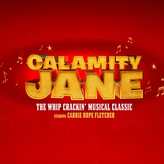Tips for writing for stage. Part Two. Exploring your characters
- Elemental Theatre Company

- Jun 6, 2019
- 2 min read
Updated: Feb 13, 2021
One of the most fun things to do as a writer is to think up some characters, put them into a situation, and see where the story takes you. This is a great way to write – not only does it make the characters realistic (they’re not doing things they wouldn’t normally do in order to get the story to a certain point) – the script also retains your interest. As a writer, if everything is planned out before you even write the first line, it is easy to get bored. It’s like watching a film and already knowing the ending. Yeah, it can still be fun to watch sometimes, but sometimes it’s a little tedious, you get bored halfway through and you turn the film off.
One of the first plays I wrote was “Ruby’s Party”, which was performed both by amateur theatre group ‘The Felley Players’ in July 2012, and by students at Derby university later that year. The play centres around Ruby’s birthday party, which is soon gatecrashed by Ruby’s ex-boyfriend and his mates. Of course, I didn’t know that when I started to write. The idea initially was just about a group of friends getting together to celebrate a birthday. Then fun things can happen – what if Ruby’s mum turns up? What if Ruby’s mum’s boyfriend is younger than Ruby? Exploring how each character reacts to this occurrence. Just having fun, with characters, without the need for a story.
Of course, this doesn’t make for a very interesting play. Something has to happen. It can’t all be about quirky characters and one-liners. Hence, the ex boyfriend is introduced to add an actual story. One of the problems with writing this way means that you have to re-write A LOT. Otherwise the script ends up being too long and waffly with nothing particularly interesting happening. This technique of “just writing” is great for exploring characters, but not for coming up with a finished piece.
Ending the play is a whole different kettle of fish, and something I will talk about in another blog post. Let’s just say, it was difficult to find a satisfactory way to end “Ruby’s Party”, and to this day, I’m still not entirely happy with it. I’ve rewritten it maybe four or five times since. And I love the characters – I feel like I know each and every one perfectly. But it’s difficult to wrap up a story that doesn’t really have an ending. That’s another problem with literally no planning. Where does the end come from? I never said this technique was perfect, but it is a lot of fun, and something I would recommend for people just wanting to explore characters without worrying about crafting a particularly interesting or well-rounded piece. Finding characters is the important bit – the story and situation those characters find themselves in, that can all come later on.
Tom Morley, June 2019



















































Comments